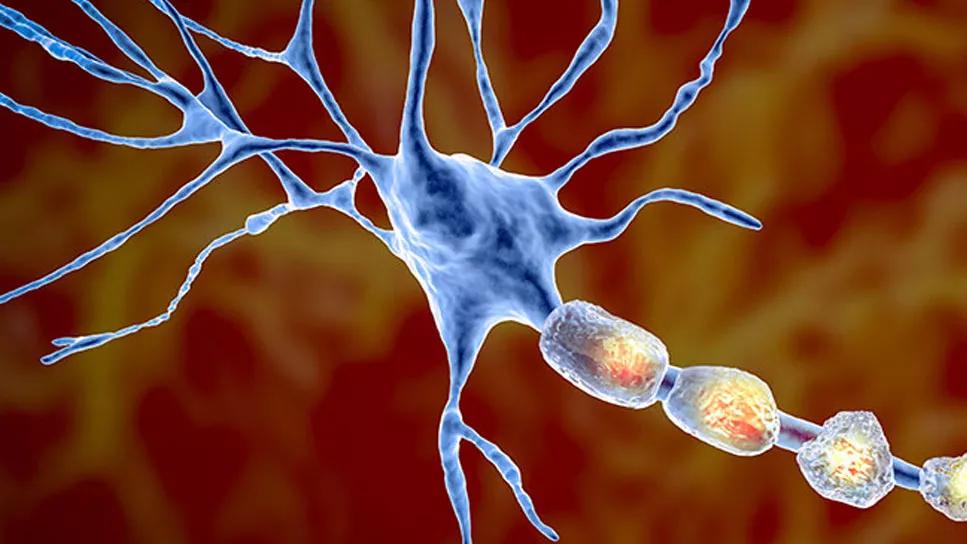Meaningful characterization is critical to advancing research and care, review authors contend

The currently used phenotypic descriptors of multiple sclerosis (MS) — e.g., relapsing-remitting MS, primary progressive MS, secondary progressive MS — do not reflect the heterogeneity of biological processes that underlie the spectrum of clinical disease. Several pathologic processes can be at play to differing degrees at once and have similar clinical manifestations, which makes the traditional classification system less useful, hindering optimal diagnosis, prognostication, disease management and research.
Advertisement
Cleveland Clinic is a non-profit academic medical center. Advertising on our site helps support our mission. We do not endorse non-Cleveland Clinic products or services. Policy
In response, Cleveland Clinic neuroimmunologist Carrie M. Hersh, DO, MSc, and colleagues recently published a call to rethink how MS is described, advocating for a focus on intrinsic biology rather than clinical phenotype. Their publication appeared as a review article in Current Opinion in Neurology (2024;37[3]:189-201).
“As our understanding of MS increases, we need to focus more on the nuanced understanding of the immunopathologic underpinnings of disease than relatively broad clinical frameworks,” says Dr. Hersh, Associate Professor of Neurology and Director of the MS Health and Wellness Program at Cleveland Clinic Lou Ruvo Center for Brain Health in Las Vegas. “Moving away from the phenotypic classifiers toward more precise terminology that reflects underlying drivers of disease will better serve patient care and research at all levels.”
Greater understanding of MS is contributing to a new model of characterizing disease. Inflammatory processes (acute, diffuse and compartmentalized in the central nervous system) — as well as neurodegeneration, oxidative stress, mitochondrial dysfunction and remyelination failure — can occur to different degrees throughout the disease course rather than in a predictable sequence. They can vary markedly between patients who are currently classified in the same disease categories, and they may even be present before clinical manifestations appear.
“It’s now becoming apparent that we should not be treating every patient with the same clinical picture the same way,” Dr. Hersh says. “We need to move to a personalized medicine approach, in which we target therapy to a patient’s specific underlying disease processes, what we term their ‘ground truth.’”
Advertisement
The review emphasizes that the emergence of biomarkers for different MS mechanisms is increasingly helping to identify underlying pathology. Important biomarkers include the following:
Dr. Hersh adds that emerging MRI techniques may soon be able to reveal differences between two apparently identical lesions visualized by conventional methods. This may help explain the heterogeneity of clinical symptoms between patients who appear to have similar disease severity evident on MRI.
“These important indicators from imaging and laboratory tests may soon help establish a better framework to inform clinical care and research,” she says.
With the help of biomarkers, it is becoming increasingly evident that MS disease processes may progress years before a patient develops symptoms.
Advertisement
“Our detection of disease is only as sensitive as our tools,” Dr. Hersh adds. “We now recognize that patients who are considered neurologically normal by the Expanded Disability Status Scale score — often used to determine candidacy for disease-modifying therapy and clinical trials — may have significant underlying disease processes that are amenable to therapy.”
The article proposes a topographical model to help conceptualize a disease course, in which patients may have subclinical disease for years during which their functional reserve is high, masking the effects of lesions. This buffer against clinical manifestations is, over time, subject to modification by lifestyle, therapy and comorbidities. As functional reserve declines and lesions progress, symptoms appear and worsen, which is associated with relapse events. Eventually, as functional reserve lowers further, disability progresses independent of relapse activity.
Unmasking disease activity and better defining patients’ “ground truth” throughout the disease spectrum should be the goals of clinicians and researchers, the review article contends. “This will drive earlier diagnosis, optimal treatment and neurotherapeutic development much better than the simplified disease categories that currently obscure, rather than elucidate, the complexity of MS,” Dr. Hersh concludes.
Advertisement
Advertisement

Mixed results from phase 2 CALLIPER trial of novel dual-action compound

A co-author of the new recommendations shares the updates you need to know

Rebound risk is shaped by patient characteristics and mechanism of action of current DMT

First-of-kind prediction model demonstrates high consistency across internal and external validation

Real-world study also finds no significant rise in ocrelizumab-related risk with advanced age

Machine learning study associates discrete neuropsychological testing profiles with neurodegeneration

This MRI marker of inflammation can help differentiate MS from mimics early in the disease

Focuses include real-world research, expanding access and more